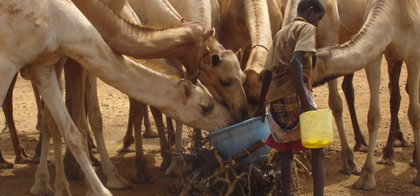Death toll from Rift Valley Fever outbreak in Senegal rises to 17
By IANS | Updated: October 10, 2025 19:30 IST2025-10-10T19:27:27+5:302025-10-10T19:30:21+5:30
Dakar, Oct 10 Seventeen people have died since the outbreak of Rift Valley Fever (RVF) in Senegal, a ...

Death toll from Rift Valley Fever outbreak in Senegal rises to 17
Dakar, Oct 10 Seventeen people have died since the outbreak of Rift Valley Fever (RVF) in Senegal, a senior official from the country's Ministry of Health and Public Hygiene said.
Boly Diop, head of epidemiological surveillance at the ministry, told local media that since September 21, a total of 119 confirmed cases have been reported nationwide.
Most of the confirmed cases were living in livestock-raising areas in the north of the country, he said on Thursday.
The ministry said on social media on the same day that hospitals in Saint-Louis, northern Senegal, have recently received modern intensive care equipment, which would significantly enhance its capacity to admit and treat patients, especially severe cases, Xinhua news agency reported.
Senegalese Minister of Health and Public Hygiene Ibrahima Sy said that the immediate priority is to strengthen medical infrastructure to ensure timely and effective treatment for patients, particularly those in critical condition, in order to save lives and contain the spread of the epidemic.
Rift Valley Fever is a zoonotic disease caused by the Rift Valley Fever virus. It primarily spreads among animals but can also infect humans.
Human infection is often linked to contact with the blood or organs of infected animals, particularly during slaughtering, butchering, assisting with animal births, or handling carcasses.
Common symptoms include fever, headache, muscle pain, and fatigue. While most cases are mild, delayed treatment can lead to hemorrhagic complications that may be fatal.
As most human cases of RVF are relatively mild and of short duration, no specific treatment is required for these patients. For the more severe cases, the predominant treatment is early intensive supportive care, including fluid management and treatment of specific symptoms.
Forecasting can predict climatic conditions that are frequently associated with an increased risk of outbreaks, and may improve disease control. In Africa, Saudi Arabia and Yemen RVF outbreaks are closely associated with periods of above-average rainfall; in East Africa, they are closely associated with the heavy rainfall that occurs during the warm phase of the El Nino–Southern Oscillation phenomenon.
Disclaimer: This post has been auto-published from an agency feed without any modifications to the text and has not been reviewed by an editor
Open in app